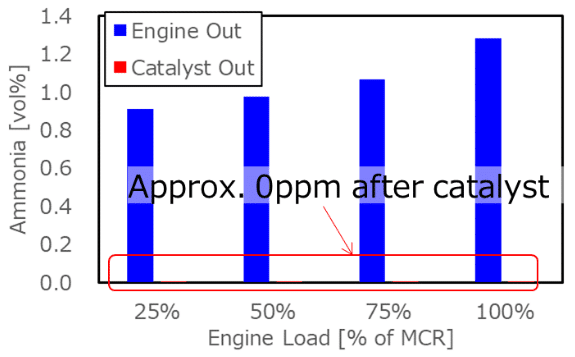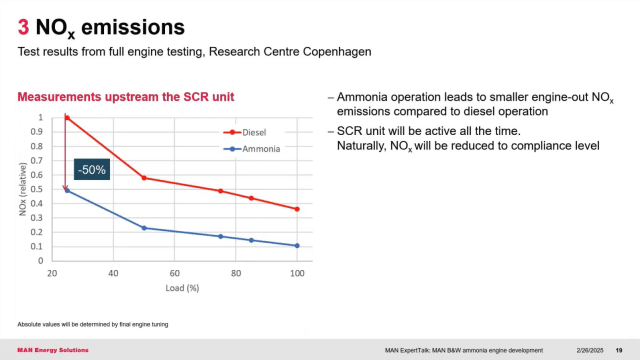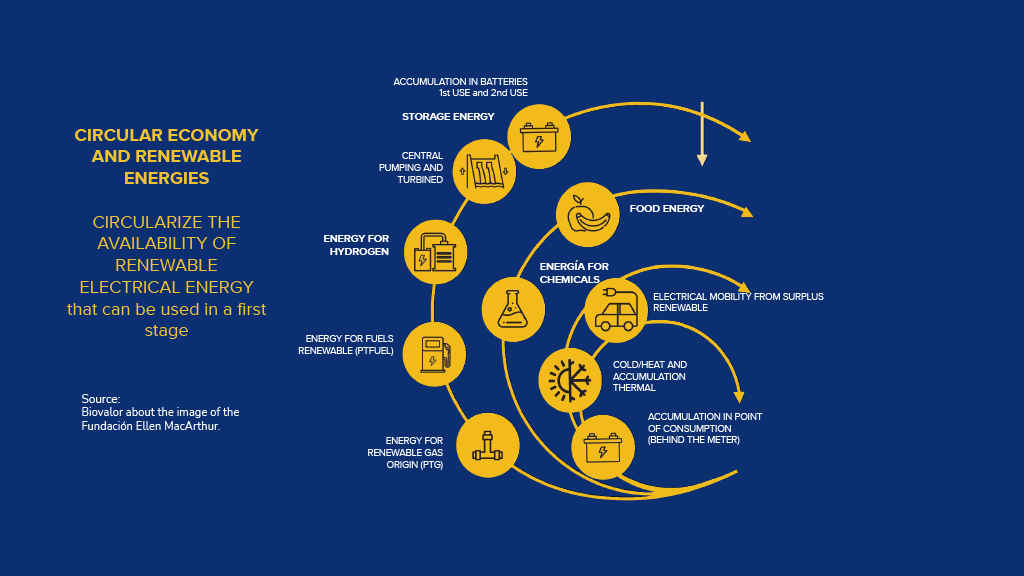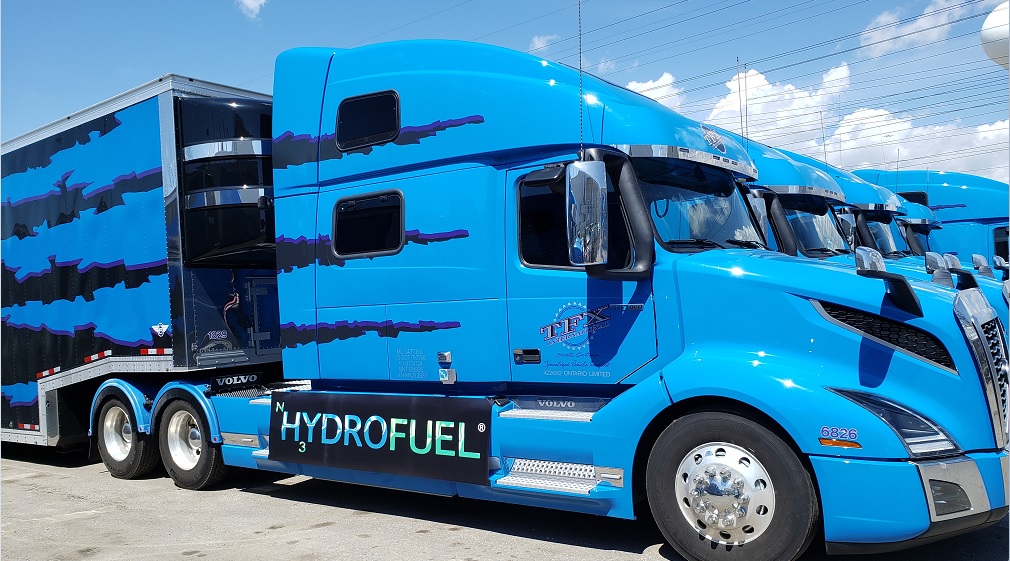Ammonia-Diesel Dual Fuel
WinGD Dual-fuel Ammonia Engine
Emission performance of ammonia-fueled, four-stroke marine engines
We explore recent, full-scale, four-stroke engine testing results from IHI and Wärtsilä. Testing indicates N2O emissions can be almost fully eliminated with catalytic treatment, and significantly lower NOX emissions for engines running in ammonia mode, compared to running on diesel. While ammonia slip remains a key consideration due to the design of a four-stroke engine, catalytic treatment of the exhaust can eliminate even high concentrations, and release mitigation systems have already been designed and deployed to ensure safe operations.
Emission performance of ammonia-fueled, two-stroke marine engines
We explore recent, full-scale, dual-fuel engine testing results from leading maritime vendors such as MAN Energy Solutions and WinGD. Testing indicates negligible emissions of the potent GHG N2O (which can be fully eliminated with catalytic treatment), and significantly lower NOX emissions for engines running in ammonia mode, compared to running on fuel oil or diesel. Overall, compliance with IMO Tier II and III emission limits is well within reach for the first generation of ammonia-fueled maritime engines.
R&D recap: the Journal of Ammonia Energy
Ahead of the 3rd Symposium on Ammonia Energy in Shanghai next month, we take the opportunity to highlight select papers and key results from the first two editions, starting with the 2022 Cardiff event:
- In an ammonia-diesel blending study, Orleans University and WinGD found that minimising the diesel fraction actually led to increased N2O emissions.
- In a bid to produce an optimal ammonia-hydrogen fuel blend, a University of Birmingham team characterised the ammonia cracking mechanism of a new, transition metal-promoted lithium amide catalyst.
- A KAUST study of swirl intensity of an ammonia-methane blended fuel finds that increasing the swirl number leads to a more compact flame, reducing NOX emissions.
- A team from the University of Minnesota found that combustion durations comparable to gasoline were obtained for ammonia-hydrogen fuel blends.
- And, as part of a joint academic-industry session on safety, it was recommended that a careful, proactive approach is taken towards new ammonia users, likely exposure risk points and deploying maritime ammonia fuel.
The Fortescue Green Pioneer sails in Singapore harbor on ammonia fuel
Fortescue Future Industries, Maritime and Port Authority Singapore and a host of supporting organisations announced a world-first marine trial in Singapore harbor last week. The vessel sailed on ammonia and diesel dual-fuel in harbor waters, after being loaded with liquid ammonia fuel at Vopak’s Banyan Terminal on Jurong Island. Two years of vessel development and months of safety and training exercises led up to the trial. MPA and Fortescue report that post-combustion NOx levels from the vessel met local air quality standards for Singapore, with further emissions treatment measures to be applied.
Project ACTIVATE: ammonia combustion engine R&D
A team led by the Norwegian University of Science and Technology (NTNU) and the Silesian University of Technology (SUT) is currently working on Project ACTIVATE. Their goal is to field demonstrate an ammonia-powered, cost-competitive agricultural vehicle by late 2023.
The Ammonia Wrap: new funding and investment for ammonia energy rolls in, next steps for Uruguay, and Sumitomo to develop a hydrogen "ecosystem" in regional Australia
Welcome to the Ammonia Wrap: a summary of all the latest announcements, news items and publications about ammonia energy. This week: new funding and investment for ammonia energy (Starfire Energy, GenCell, Syzygy Plasmonics and Hazer Group), marine engines from the "Ammoniamot" consortium, Uruguay's national hydrogen strategy takes another step, Onahama Port to investigate hydrogen & ammonia imports and Sumitomo to develop Gladstone's hydrogen "ecosystem".
University of Minnesota demonstrates efficient ammonia dual-fuel engine system
This month, researchers at the University of Minnesota began successful field tests of their new ammonia engine, operating a heavy-duty tractor across farmland near Morris, MN, on a dual-fuel blend of 70% diesel and 30% ammonia.
Heavy-duty diesel trucks to be converted to use ammonia fuel in Canada
This week, Hydrofuel Inc announced a commercial demonstration project to convert diesel gensets and transport trucks to run on ammonia fuel, with the conversion work and dual-fuel operations scheduled for a three year period. The CAD $2 million (USD $1.5 million) project will take place at TFX International, in Toronto, and involves the conversion of four existing diesel-fueled assets: two stationary power generators and two transport trucks. These will be converted using Hydrofuel's "aftermarket multi-fuels engine retrofit systems," and they will thereafter be able to operate on a dual fuel basis.







